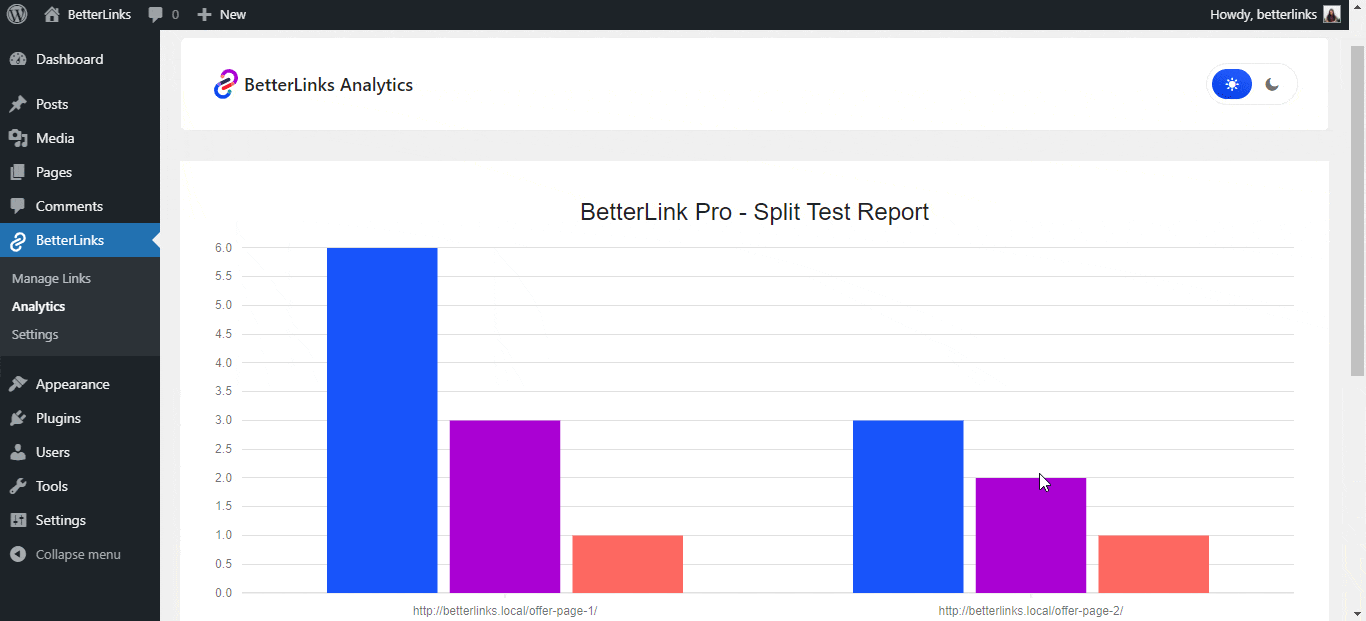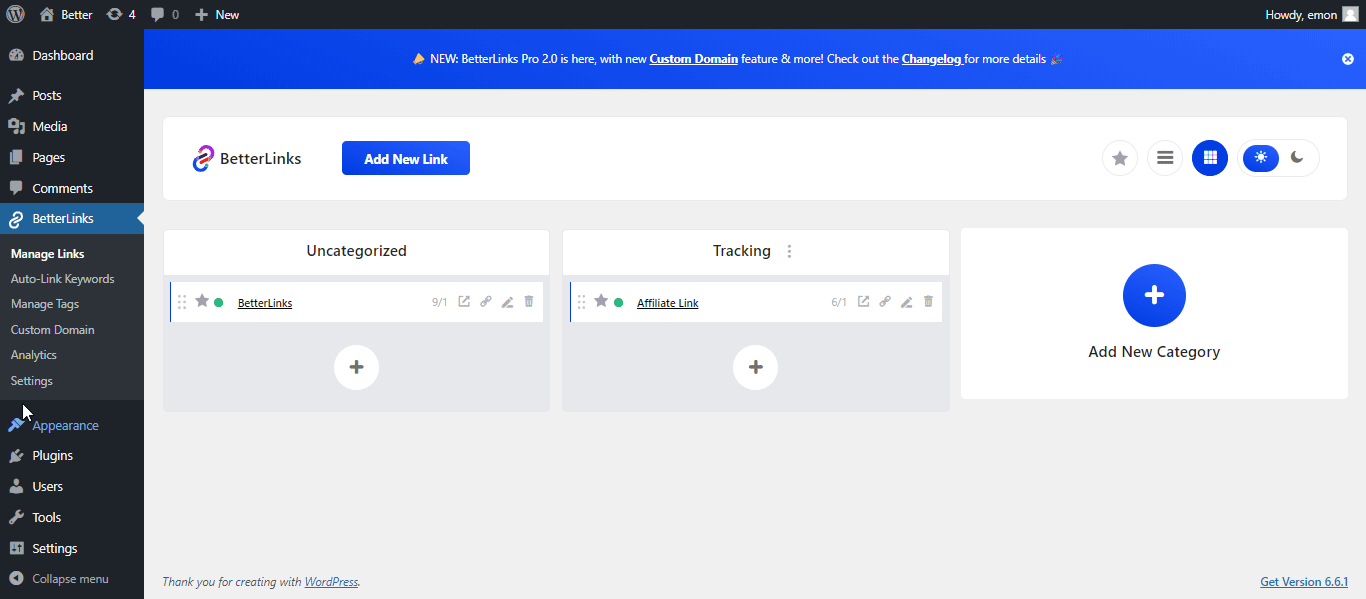URL slug is the part of a web address that comes after the domain name and serves as a unique identifier for a specific page. In affiliate marketing, messy and hard-to-read URLs are common. These complicated URLs can confuse visitors, cause more errors, and hurt your SEO performance. So in this comprehensive blog, we will show you 3 ways to optimize URL slug for affiliate marketing. We will also share some additional tips so that you can ensure the best results.

We will find out how in details URL slug optimization works in affiliate marketing. At the end of this blog, we will discuss Frequently Asked Questions (FAQs) to clarify any confusion you might have. So, let us get started!
What Are URL Slugs? What Is Their Role in Affiliate Marketing?
Before knowing how to optimize URL slugs, we need to identify which part of a URL is the slug. Let us show you a quick example:
- https://betterlinks.io/optimize-url-slug-affiliate-marketing/
As you can see above, we have provided a URL. Here, the bold part of the link is the URL slug. So, a URL can broken down into the scheme (https), then the subdomain (betterlinks.io) and finally the slug (optimize-url-slug-affiliate-marketing) after the second slash.

A good, clean URL slug offers a positive SEO impact by ensuring clickable links that drive more traffic. Therefore, it is one of the most widely used tools for any affiliate marketer. If you are into affiliate marketing, you should know about the different ways to optimize the slug of a URL.
How to Optimize URL Slug: 3 Quick Ways
Let us go through 3 different ways to optimize URL slugs. Remember that there are numerous ways to optimize URL slugs. We will discuss a few more best practices later in this blog. But if you are starting out, implement these 3 methods that we are going to explain now.
Method 1: Cloak Your Links
Link cloaking is the practice of hiding the destination URL and using a custom link as a replacement. It is one of the most important link optimization techniques for affiliate marketers. You can use an advanced link management solution like BetterLinks for link cloaking. To do this, make sure you have BetterLinks installed and activated on your WordPress website.
Next, click on the ‘BetterLinks’ option from the left side of your WordPress admin dashboard. Navigate to the ‘Manage Links’ tab and add a new category as shown in the image below.

In the following popup window, enter your link details such as title, description, category and tags. Under the ‘Link Options’ section, put a checkmark on the ‘Sponsored’ option since it is an affiliate link.
For tracking link performance data and further analytics, put a checkmark on the ‘Tracking’ option as well. Click on the ‘Publish’ button after setting the Target URL or destination link and the Shortened URL or custom cloaked link.

Thanks to the advanced analytics feature on BetterLinks, you can later the performance of the cloaked link. This feature will give you insights into unique clicks, conversions, conversion rate and more.

Method 2: Keep Your Slugs Short
Your URL slug should contain short and precise words. Avoid using the entire content title in the slug. Shorter URL slugs mean more manageable and clickable links for visitors. This also gives you shorter URLs that can potentially drive more traffic and positively impact your SEO efforts. Furthermore, search engine bots can better understand the content topic from a shorter slug. For a better understanding, let us look at two URLs:
- https://betterlinks.io/optimize-url-slug-affiliate-marketing/
- https://betterlinks.io/how-to-optimize-url-slug-affiliate-marketing-for-the-best-seo-impact-in-long-run/
From these two examples, we would prefer using the first URL slug because of its shorter length. So, optimize your URL slugs accordingly.
Method 3: Use Relevant Keywords
Your URL slug should contain a relevant keyword. To find such meaningful keywords, you should do proper keyword research. Consider factors such as search volume, length and ranking difficulty in order to find the perfect keyword for your URL slug. Make a list of different keywords and compare them to find the best possible ones.

10+ Best Practices for URL Slug Optimization
We have already discussed 3 main ways to optimize URL slug for affiliate marketing. To ensure an even higher level of optimization, implement the following 10+ best practices for your affiliate URL slugs:
- Avoid using special characters: Instead, use letters and hyphens to stay clear of encoding issues
- Match slugs with content: The slug should reflect the content presented in the page and show users what to expect
- Include target keywords: Using relevant target keywords in the slug will help search engines and users better understand the content topic
- Make sure your URL slug is descriptive: The URL slug should be descriptive enough to give a clear indication of the page content
- Avoid dates and numbers: Make the URL evergreen by excluding dates and numbers which will allow you to easily update it without redirects
- Use hyphens to separate words: To improve readability, use hyphens in the URL slug and avoid using underscores or spaces
- Stick to lowercase letters: Since URLs are case-sensitive, place lowercase letters to avoid potential duplication issues
- Avoid stop words: Stay clear of unnecessary words like ‘and’, ‘the’ or ‘of’ to keep slugs focused, concise and easy to read
- Avoid keyword stuffing: Do not include too many similar keywords so that you do not stuff them and cause negative SEO impact
- Future-proof your slugs: Instead of including elements that might become outdated, make sure the URL remains relevant over time
- Review and update old slugs: Update older slugs to align with current best practices on a regular basis but do it carefully to avoid SEO penalties
- Create consistent URL structures: Implement a uniform structure across your website to aid visitor navigation and indexing by search engines
These are just some of the many best practices for URL slug optimization. Remember to track the performance and experiment with different methods to find what works best for you. For more information, read this guide from Google.
Monitoring & Updating URL Slugs
Once you have optimized URL slugs, the process does not end there. You need to analyze the performance of your links. So, this means you should evaluate the number of overall clicks, unique clicks, conversions and conversion rate of your optimized URLs and compare them. You can then update the URLs according to their performance.

To do this, you can use a dedicated link management solution like BetterLinks. This handy WordPress plugin comes with an advanced analytics functionality that lets you easily track these important metrics.
Optimize URL Slug to Succeed with Your Affiliate Marketing Goals
URL slug optimization is a crucial step in affiliate marketing. If you want to succeed in the long run as an affiliate marketer, you cannot overlook this important step. By adopting the methods and best practices in our blog, you can ensure SEO-friendly URL slugs that drive SEO, clicks and conversions.
Join our Facebook community and subscribe to our blogs to never miss an update. We hope you find great success with your affiliate marketing adventure!
Frequently Asked Questions (FAQs) About Affiliate Marketing & URL Slugs
Still have questions? Go through these frequently asked questions and their answers to learn more about URL slugs and affiliate marketing.
1. How to identify the slug of a URL?
The slug of a URL is the last part of the URL. Basically, a URL first contains the scheme (https), then the subdomain and finally the slug after the second slash. So, the bold portion of the example URL https://betterlinks.io/optimize-url-slug-affiliate-marketing is the slug.
2. How to use cloaked affiliate links on Facebook?
Cloak the destination URL using a link management tool such as BetterLinks. Then, you can place the shortened or custom cloaked link on Facebook. Make sure to read the banning and moderation guidelines of Facebook in advance.
3. How to track the performance of your affiliate URLs?
To track the performance of your affiliate URLs, you need to enable the tracking feature using a plugin like BetterLinks. BetterLinks comes with an analytics feature that lets you easily track the performance of your URLs. So, you can evaluate the clicks, conversions, conversion rate and other metrics with such a tool.
4. Why does URL slug optimization play an important role in affiliate marketing?
Optimized URL slugs leave a positive SEO impact. Besides, affiliate marketing URLs are often messy. So, optimizing the URL slugs lets you have cleaner, more clickable links that drive more traffic. This is why most affiliate marketers place great emphasis on optimizing URL slugs.
5. Can you give some additional affiliate marketing tips?
Sure. Remember to avoid common link building mistakes. Also, place affiliate URLs in blogs smartly. It is also important to build a reliable affiliate network. So, make sure to do this as well. Affiliate marketing is a fast-evolving industry. So, always keep yourself updated with all the latest trends.
6. Can you recommend a tool for optimizing URL slugs for affiliate marketing?
Yes. Use a link management solution like BetterLinks that can help you optimize affiliate URL slugs. BetterLinks with a broad range of link options and advanced features like analytics that make URL slug optimization and tracking a lot easier.
7. What is the ‘Parameter Tracking’ feature in BetterLinks?
Parameter Tracking is a handy feature on BetterLinks that lets you choose from Forwarded, Target URL and UTM parameters to track them according to your needs. It can be very useful during affiliate marketing campaigns.

8. What are some URL slug optimization best practices?
Some URL slug optimization best practices include avoiding the use of special characters, matching the URL slug with the headline, placing target keywords, making sure your URL slug is descriptive, avoiding keyword stuffing and not using dates in the URL slug. These are just some of the many best practices out there. Always track your link performance to find out what works best for you.
9. How to find relevant keywords to include in affiliate URL slugs?
To find relevant keywords for your affiliate URL slug, you need to do keyword research. Remember to consider factors like keyword length, search volume, difficulty and others. Compare different keywords and evaluate past link performance data to find the best options.
10. What is the destination or target URL in link cloaking?
In link cloaking, the target or destination URL is the original URL location where the visitor will be taken upon clicking the link. Generally, destination or target URLs are shortened to cloak or hide them.








